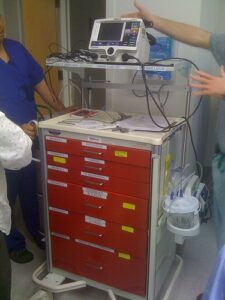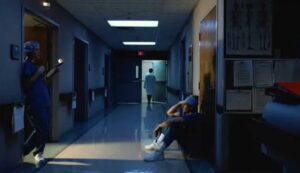Common Nursing Terms & Abbreviations: A Guide for New Nurses
You’ve waited for this moment for years: finally getting your very first hospital job after nursing school. While many new nurses are feeling on top of their game after completing all the requirements of their certification, that first day on the job can be overwhelming, especially when all the veteran nurses are shooting around phrases and words you don’t know or don’t recall from your textbooks. Don’t worry, we’ve got your back. For a refresher on common nursing terms, check out this list and be ready to tackle that assignment like you’ve been on the job for years.
Code Blue
“Code blue” is one of the most important common nursing terms that a new RN should know. When you hear “code blue” on the hospital floor, it means that a patient is experiencing an unexpected cardiac or respiratory arrest, requiring rescue and resuscitation measures. It is a hospital-wide alert, so chances are you will unfortunately hear more than a few “code blues” in your time as a nurse.

Peds
Pronounced “peeds,” this is nursing shorthand for the pediatric unit of a hospital.
SOPs
Standard operating procedures.
Crash Cart
A “crash cart” is a mobile shelving unit used in hospitals for transporting and dispensing emergency medication and equipment. “Crash cart” is one of the most common nursing terms since there is no other or “official” name for it. This is extremely important for a new nurse to know because crash carts contain life-saving tools that are essential in any unit.

Tachy
“Tachy” refers to tachycardia, or rapid heart rate. Tachycardia can sometimes indicate serious illness in a patient.
Noc
“Nocs,” or “nocts,” (short for nocturnal) is one of the most common nursing terms you will hear as you start your career. The “noc” shift refers to the night shift, which in most hospitals is 7 PM to 7:30 AM or 6 PM to 6:30 AM. Before taking your first noc shift, check out these tips for adjusting to working nights.

DX
Diagnosis.
Vitals
Vital signs of a patient. These include body temperature, pulse rate, respiration rate, and blood pressure.
ADR
ADRs stand for adverse drug reactions. It is super important to know if your patient has any ADRs listed in their chart before treating them.

Hat
In nursing, a “hat” is not something you want to wear on your head. A hat is a device that fits into the patient’s toilet to collect samples to screen for cancers or other illnesses.
Sundowning
The term “sundowning” refers to a patient’s state of confusion or disorientation occurring in the late afternoon and lasting into the night. Sundowning in patients is often caused by Alzheimer’s disease or dementia. If you notice a patient getting confused, anxious, or agitated at night after seeming normal all day, they may be sundowning. Sundowning can also lead to pacing or wandering.
